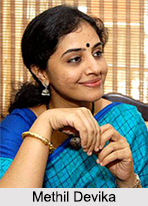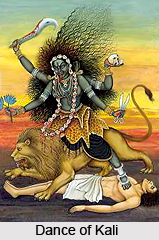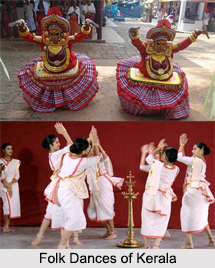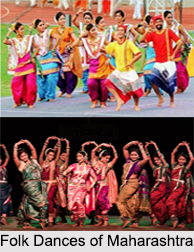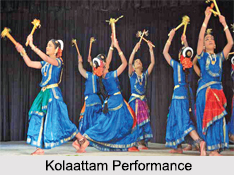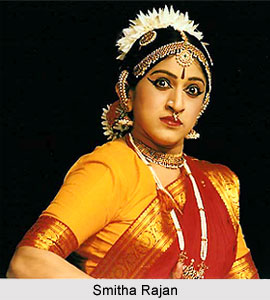 Smitha Rajan was born in the year 1969. She is one of the popular Mohiniattam Dancers from Kerala. She is the granddaughter of Shri Kalamandalam Krishnan Nair and Kalamandalam Kalyanikutty Amma, and daughter of Sreedevi Rajan, who is a reputed Mohiniattam Guru. Smitha took her initial training from her mother. Her father, T R Rajappan, died when she was very young.
Smitha Rajan was born in the year 1969. She is one of the popular Mohiniattam Dancers from Kerala. She is the granddaughter of Shri Kalamandalam Krishnan Nair and Kalamandalam Kalyanikutty Amma, and daughter of Sreedevi Rajan, who is a reputed Mohiniattam Guru. Smitha took her initial training from her mother. Her father, T R Rajappan, died when she was very young.
Life and Career of Smitha Rajan
Smitha started her life as a dance performer at a very young age under the watchful eyes of her grandparents in Kochi. She learned the art rather quickly, and it came naturally to her. The surrounding and ambience too helped her a lot during her initial training days. Her aunt, Kala Vijayan (Sangeetha Nataka Akademi Award winner for Mohiniattam) was the first person to spot the talent of young Smitha. Her life took a turn and she started to train Bharatanatyam under Guru Kala Vijayan. Smitha did her Arangetram in Bharatanatyam at the age of 4. Guru Sreedevi Rajan, a well-known teacher and dancer, taught her daughter Smitha her first lessons in Mohiniattam. Smitha performed her Arangetram in Mohiniattam at the age of 6. She received her Kathakali training from her grand father, Guru Kalamandalam Krishnan Nair. She received her training in Carnatic Music under Professor Kalyanasundaram for over 8 years.
Smitha turned into a professional dancer at the age of 12 and performed at many venues both in India and aboard helping in popularizing Mohiniattam in 1980. She was a leading dancer during that period.
Presently, Smitha Rajan lives in St. Louis, MO, USA along with her family and runs a dance institution Nrithyakshetra "Temple of Dance".
Honours Received by Smitha Rajan
* 2009- Honoured by OHMKARAM, Greater St. Louis, USA
* 2005- Awarded the title Kalaratna "Vallathol Puraskar" by KALADARPANAM, Kerala
* 2005- Dance Omi International Dance Collective Residency, New York, USA
* 2002- Recognized as Ambassador for Global Peace through Art and Culture by Indian Junior Chamber of Commerce
* 2002- Honoured by SPIC-MACAY, Kochi Chapter
* 1997&1994- Recognized as the Best Mohiniyattam Dancer of the year by NANA, for her Indian National Television Network (Doordarshan) performance
* 1993- Recognized as "Artist of the Year" by "THE HINDU", India`s National Newspapers, for her performance in SOORYA Music and Dance Festival
* 1990- Upgraded as A+ Grade Artist of National Television Network (Doordarshan)
* 1989- Acknowledged by SPIC-MACAY and was included into their panel of performers
* 1989- Acknowledged by Kendra Sangeeth Natak Academy and was inducted into their panel of performers
* 1987- "A grade artist" of Doordarshan (Youngest A Grade Artist)
* 1985- Achieved National Scholarship from Kendra Sangeeth Natak Academy, New Delhi, Govt. of India
* 1985- Acknowledged by Doordarshan, National Television Network in India and was included into their panel of performing artists
